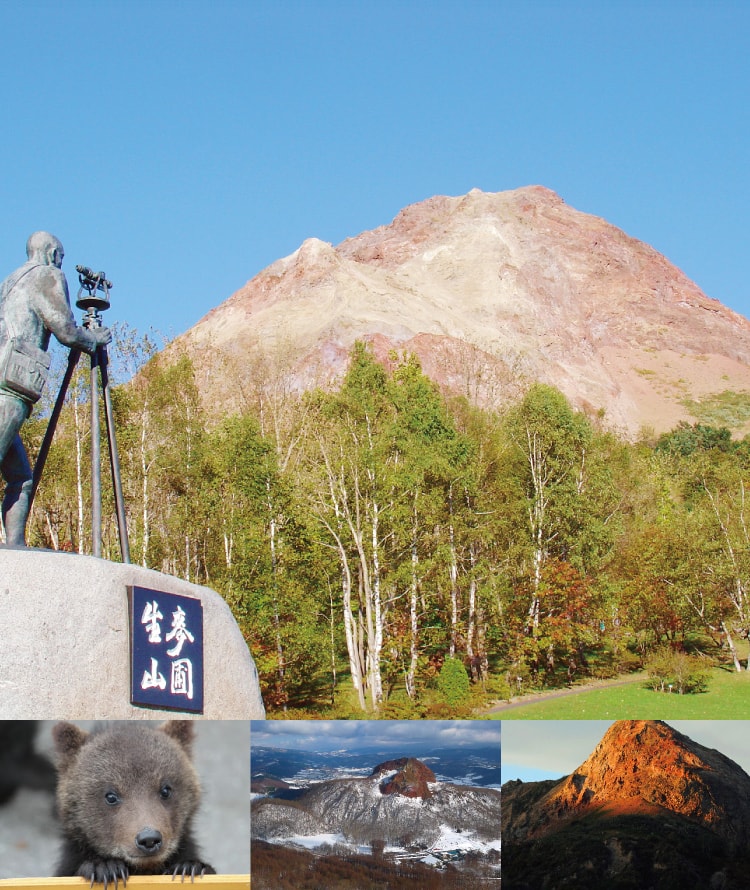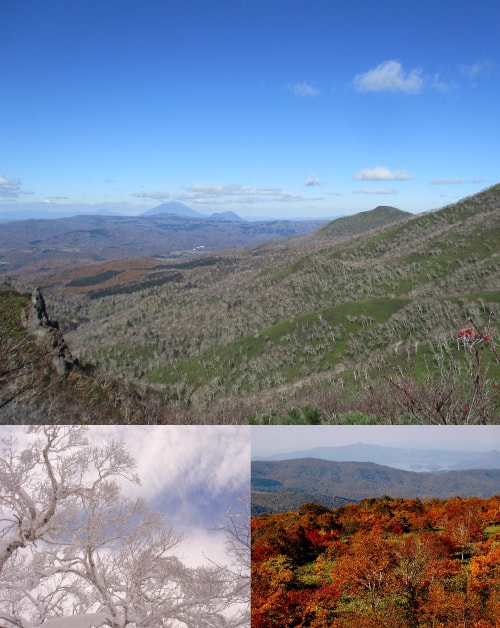Sobetsu is located in the heart of the Shikotsu-Toya National Park.
With volcanos such as Mt Usu and Mt Showa-Shinzan,
Sobetsu’s landscape is a natural beauty formed by volcanic activities
over hundred thousands of years.
Its attractive sightseeing spots and activities are enjoyed
throughout all seasons.
Mt Showa-Shinzan is known throughout the world for its peculiar and sudden birth out of a simple wheat field.
Despite its worldwide recognition as geological wunderkind and Hokkaido natural heritage, the mountain itself is owned by a private Sobetsu citizen!

The about 398m high mountain is a so-called “lava dome” and it emerged within only 2 years’ time when neighboring volcano Usu erupted in 1943. The mountain came into existence during a difficult time, it was war and there was a lot of confusion, and people did not have enough food. The eruption happened during this chaos, and although it was such a difficult time, a local postmaster, Mr. Masao Mimatsu, was fascinated by the volcano’s activities, and able to observe and document the mountain’s progress for future generations. These documents were later to be known as the “Mimatsu Diagram” and received international acclaim at volcano conferences throughout the world. In addition, Mr. Mimatsu purchased the land for the volcano’s protection, and up to today it is private property of his descendants – since the mountain was declared a natural monument of Japan, this is quite a rarity worldwide. Furthermore, the area around Lake Toya and volcano Usu including Mt Showa-Shinzan, has been registered as Japan’s first “Unesco Global Geopark” in 2009.
Once you visit the Mount Showa-Shinzan area, you will not only find the Masao Mimatsu Memorial Hall displaying documents of the volcano’s history, but there are also restaurants, souvenir shops, a bear ranch, a glass museum and the Mt Usu Ropeway.

Natural Wonders are awaiting you.
Mount Usu is a strato-volcano formed on the southern rim of the caldera, Lake Toya. The mountain’s area was formed about 20,000 years ago, and its current form accrued about 7-8 thousand years ago. Alone in the 20th century the volcano has erupted 4 times. You can take the ropeway up Mount Usu and see the crater from its eruption in 1977.
Alpine Flowers Blossoming –
Take in the Fresh Mountain Breeze.
Orofure Mountain has an altitude of 1230.8m, towering the border between Sobetsu and Noboribetsu. From the Orofure Pass Observatory Deck located at the top of the pass, you can see – on clear days – Lake Toya, Lake Kuttara, Mount Yotei and the Pacific Ocean all at once. An overwhelming view!
In summer, you can enjoy the mountain trails up to Mt Orofure with its lovely alpine plants and blooming flowers. Orofure Mountain Pass is also a spot to be enjoyed in other seasons, such as the vivid colors of autumn leaves in fall, and the snow-covered trees in winter.
Caution: National Route No.2 (route from Lake Toya to Noboribetsu) is closed during winter nights (17:00-9:00).

Certainly this is one of the best view spots for gazing at Lake Toya!
Sobetsu Park is located at the south rim of the Toya Caldera and offers a fantastic view over a massive area of the 86,000 m² large national park. From the observation deck at the top of Mount Fudo, you will have a splendid view over Lake Toya, and the infamous Mount Yotei majestically peaks in the far distance in the North. Your sight will wander South, where Mount Usu and Mount Showa-Shinzan are brotherly united through a single line on the horizon. In addition, this spot is also known for its overwhelming beauty in Spring: in mid-May you can enjoy about 300 plum trees in full bloom, coloring the observation deck’s surrounding in a carpet of pink.
For the annual schedule of flower blossoming,
please visit the Tourist Association’s Facebook Page:
https://www.facebook.com/SobetsuKanko





